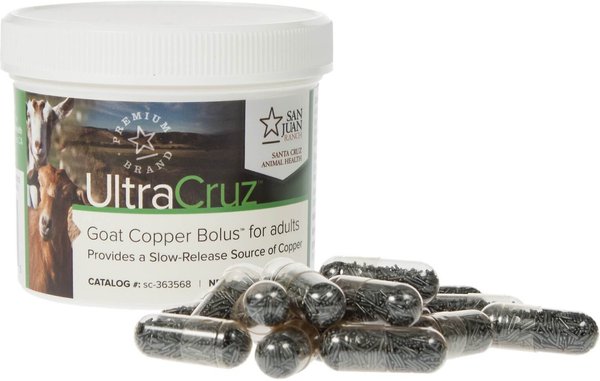Copper Bolus
Copper Bolus For Goats
From American Consortium For Small Ruminant Parasite Control: Best Management Practices for Internal Parasite Control in Small Ruminants COPPER OXIDE WIRE PARTICLES (COWP)
Internal parasites pose a difficult challenge for many small ruminant producers. Parasites are numerous and adaptable. Some traditional control methods may fail due to parasites having developed resistance to the anthelmintics (dewormers). Organic producers usually face even greater difficulties because they are more limited in their control options. A multi-pronged approach to managing internal parasites is now recommended. This approach includes attention to nutrition, good pasture management, animal selection, and good sanitation. But even with these important measures, some animals may still need treatment. One treatment that may be effective is copper oxide wire particles (COWP). These tiny metal particles are a slow release form of copper that can be administered in a gel cap. Research indicates that COWP are effective against adult barber pole worms (Haemonchus contortus).
A good way to screen for H. contortus levels is to use the FAMACHA© method for assessing anemia. ? As with dewormers, COWP should only be given to animals that require treatment based on FAMACHA© and/or the Five Point Check©. The whole flock or herd should not be treated with COWP.
-
Similar to most dewormers, the deworming effect of COWP is immediate, but short-lived. Fecal egg counts might climb again after 3 to 4 weeks, even sooner if the animals are carrying a large load of immature larvae . FAMACHA© can be used to monitor animals for additional need for treatment or management change.
- Copper oxide wire particles are sold as copper supplements for goats (2 and 4 g boluses; g = gram).
- Goat Bolus provides supplemental copper for goats and kids. Each bolus contains copper oxide wire particles (COWP). Under most conditions, one Copper bolus per goat is appropriate, and re-administration is not necessary for at least 6 months.
-
Learn much more: https://www.wormx.info/bmps




©2025 AppleJo Farms. All rights reserved.
Powered by Boutique Store Builder . Web Design by Avalon Rose Design.
Powered by Boutique Store Builder . Web Design by Avalon Rose Design.

